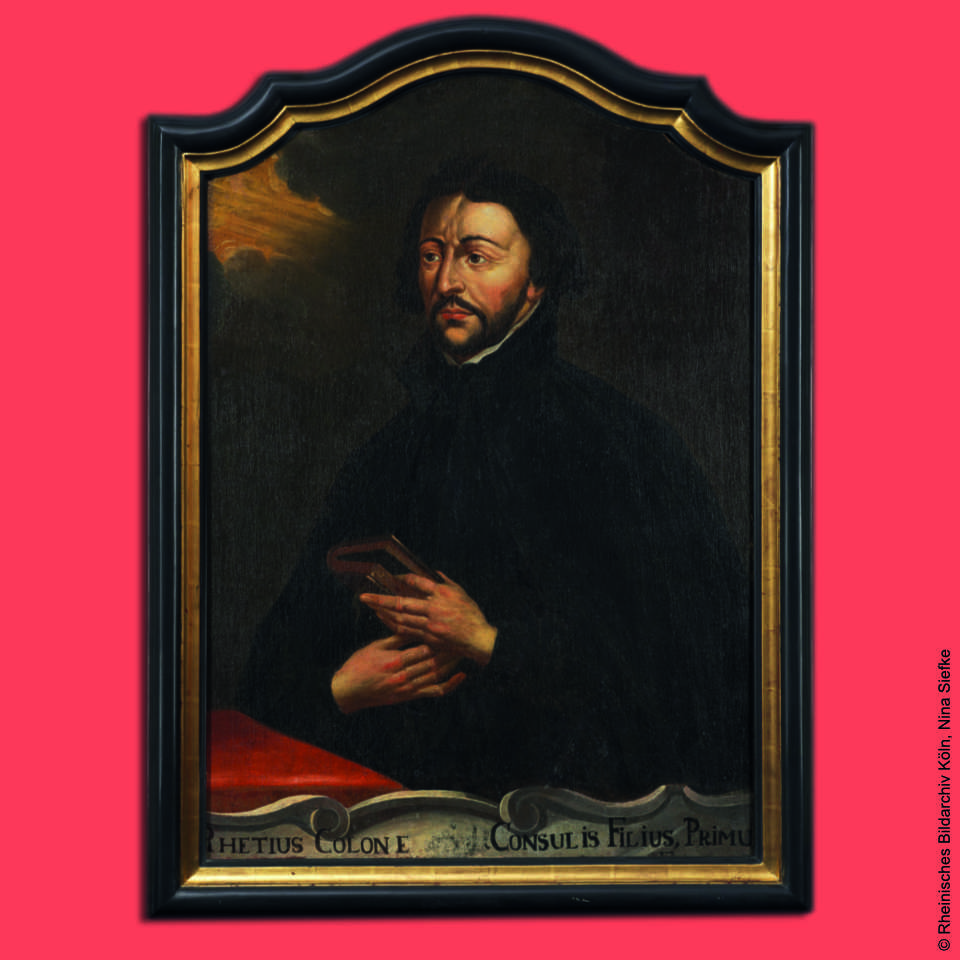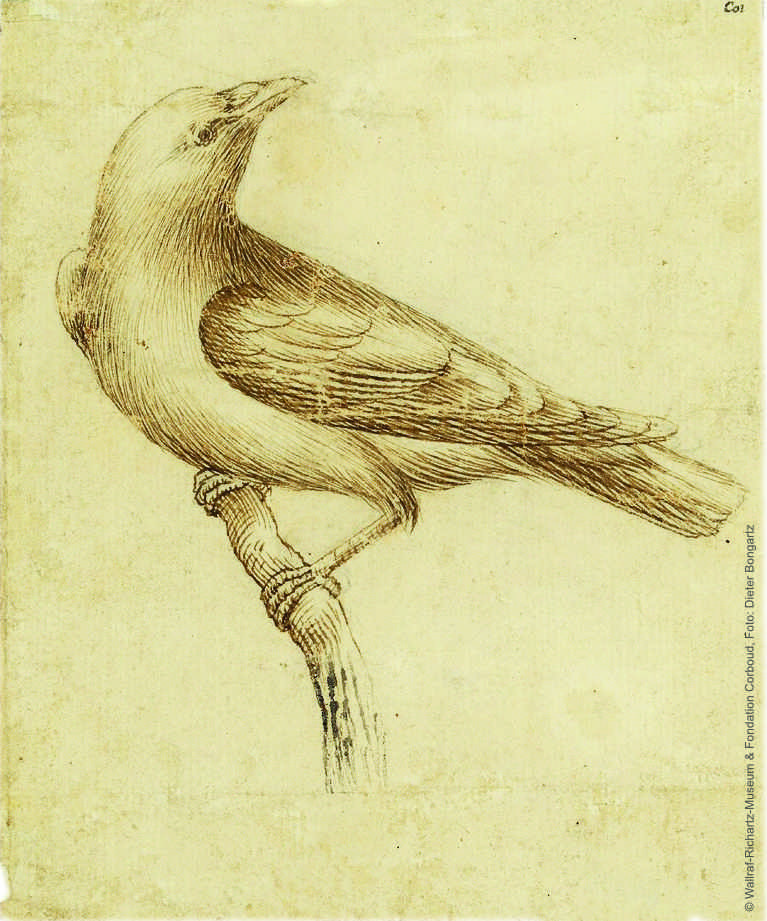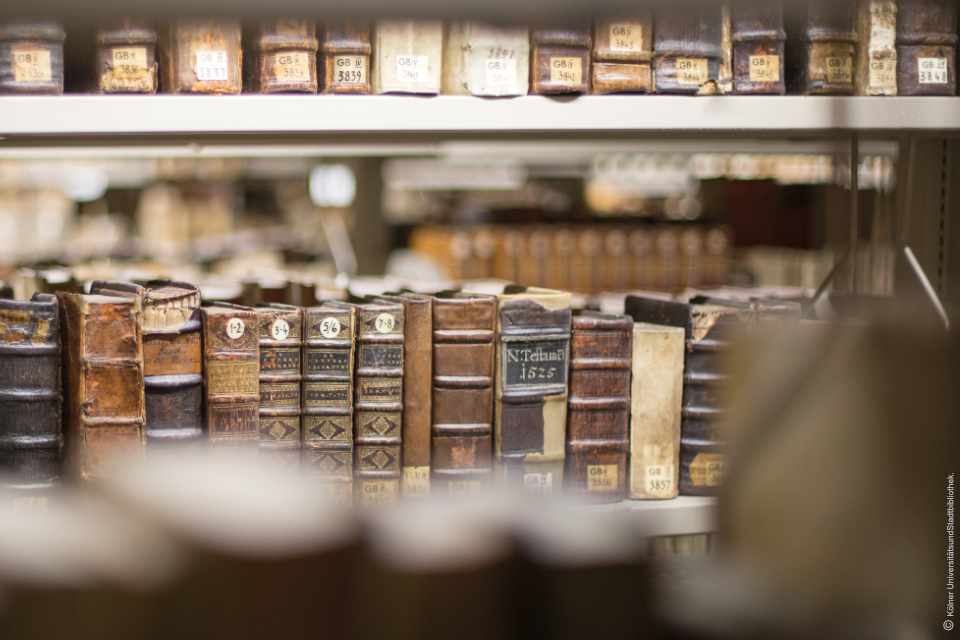The cultural heritage of the Cologne Jesuits
Scientists from the University of Cologne (UoC) are researching, exploring and experiencing Cologne. They are busying themselves with flora, fauna and last but not least the inhabitants of the city – past and present. In this section, they report on things that are interesting, quirky, typical or less familiar. Christine Schmitt from the Chair of Early Modern History talks about a lost treasure that can be rediscovered virtually.
The Cologne branch of the Jesuits was founded in the 16th century. For more than 200 years, the monks, who had also run the Gymnasium Tricoronatum since 1556, built up a nationally important, extensive collection of books, art and artefacts. As a result of the dissolution of the monastery by Pope Clement XIV in 1773 and especially during the subsequent French rule over the Rhineland, the collection experienced a turbulent history of loss and dispersion. Today, only partial collections are kept in various Cologne institutions. A large part of the former Jesuit library as well as drawings and graphics can be found in Paris.
Since 2018, we at the chair of Professor Dr Gudrun Gersmann for Early Modern History at UoC have been intensively concerned with the dispersed collections. We especially also dealt with questions of the transfer of knowledge: How can we make something from the past visible and understandable for non-experts even if one cannot see it either partially or in its entirety? How can we spark an interest in what the Jesuits had to offer that are anything but dusty, boring Catholic collections?
Returning to the historic site of the Jesuit College near Cologne Cathedral does not immediately lead you anywhere. However, the digital world offers many opportunities to virtually merge artefacts, create historical contexts, establish different approaches to knowledge, and thus retell the history of today's scattered objects. Together with our Cologne cooperation partners, the Museum Service Cologne and the Rhenish Picture Archive Cologne, we were able to master this task thanks to funding from the Landschaftsverband Rheinland (Rhineland Regional Council).
In order to explain the entire historical context of the collection in a first step, we have designed an animated introductory video and created an easy-to-read online publication ‘Bücher, Bilder, Lehrobjekte: Die Sammlungen der ehemaligen Kölner Jesuiten’ published for a wider audience.
If you are looking for a playful start, the game ‘Haus der Rätsel’ is recommended. The interactive scavenger hunt on the Actionbound platform was created based on our research by a colleague working for the the Museum Service. After the free download of the Actionbound app, you can find the ‘Haus der Rätsel’ via the bound search and start an escape game through the fictitious rooms of the former Cologne Gymnasium Tricoronatum.
The database ‘Kulturelles Erbe Köln’ from the Rhenish Picture Archive Cologne, on the other hand, provides access for all those who are interested in the details of the objects that are still to be found in Cologne today.
Everything you need to know about the collections of the former Jesuits in Cologne can be found collated on our website for digital science communication, the latest additions are the two videos on the topic of ‘coveted books’ and the virtual exhibition in the German Digital Library.
Today, the KÖLNER GYMNASIAL- UND STIFTUNGSFONDS (Cologne grammar school and foundation fund) is the owner of the former Jesuit collections. Since 2018, it has supported an extensive project for the research and development of cultural heritage, in which the Chair of Early Modern History plays a significant role. The cooperation project for the broader transfer of knowledge was funded by the Landschaftsverbands Rheinland (LVR).


